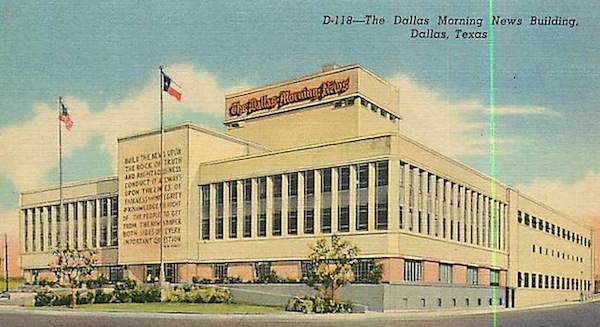
When The Dallas Morning News debuted a digital subscription plan in 2011, publisher Jim Moroney acknowledged that the strategy had its risks. The Morning News paywall, which arrived shortly before the more talked-about one at The New York Times, would be rigid: no metered access, no deals, no ways to sneak through. The goals were to shore up print readership (by bundling online access with a subscription) and to build a new paying digital audience. In a memo to staff, Moroney predicted there would be naysayers:
We will be vilified by the digital futurists, ridiculed by colleagues in our industry and fitted with a dunce cap by the trade media. In fact, some of the same will be heard in our own hallways. Much like our 40% increase in home delivery pricing in 2009, this strategy goes against the grain. But that’s okay. We’ve been there before…
I want to assure you that our Subscriber Content strategy has been carefully planned and it will be diligently executed. I know that because we are fortunate to have dedicated and talented people working at our company.
Are we certain this strategy will succeed? No. In fact, maybe we will be wearing that dunce cap.
What will we do if the strategy fails? We will get up and try again. As a wise person once said, in times of adversity, the greatest failure of all is the failure to dare to take risks.
When, two days after that memo, we quoted Moroney in an interview saying the move was “a big risk,” he sent another note to staff saying he didn’t remember using those exact words, but noting that plans can be reversed:
I did say that you can always go back to free. Because you can. Yet that’s not what we are planning to do. We are planning on making this strategy work. As I said in a note to you last Tuesday, strategies need time to work. We are going to give this strategy lots of time and lots of support.
Two and a half years later, the Morning News is going back to free — with a twist. The hard paywall came down Tuesday at DallasNews.com; all articles are now available to all. Instead of paying for access to news, readers will now be asked to pay for an optional, “premium” online experience:
Consumers can now opt to pay for their news in a premium digital experience environment that includes enhanced design and navigation, limited advertising, and access to unique subscriber benefits. In general, print and digital subscribers will have access to dallasnews.com/premium with their current subscription. For those without a subscription, the premium digital experience subscription costs $2.99 per week.
“Experiments mean you can fail, and we may fail. And if we do, that’s okay,” Moroney told me yesterday. “If we’re not failing, we’re really not experimenting, because experiments mean sometimes you fail.”
You can think of the new approach as a variant of the two-site strategy that’s become popular among a set of large metro newspaper publishers. Here in Boston, you have Boston.com — free, bubbly, buzzy, webby — and BostonGlobe.com — classy, clean, sophisticated, filled with the stories published in the print newspaper, and behind a paywall. Hearst has done something similar in Houston (free Chron.com vs. paid HoustonChronicle.com) and San Francisco (SFGate.com vs. SFChronicle.com).
But that strategy relies on separating the sites both in terms of design and in terms of content. If you want access to every Boston Globe story, you have to pay for BostonGlobe.com. The first crack in that strategy came in August, when the San Francisco Chronicle started putting all its stories on its free-to-all site too. (“The only declaration we can make at this point is our newspapers must continue to experiment, measure the results and continuously iterate the experience,” a Hearst spokesperson told Poynter.)
The Dallas approach takes that further: Instead of a two-site strategy, it’s a two-look strategy. Everything lives on a single website, DallasNews.com; cookies and user accounts determine whether you get the old or new look. (Closest analogue: The politics site Talking Points Memo last month debuted a subtly cleaner, “ad-lite” version of the site for members of its Prime membership program — although it’s worth noting the cleaner design is pitched as one benefit among several, such as the longform stories available only to Prime members.)
“You can park at a sporting event and you can pay a lot more money to park closely than far out,” Moroney said. “You can still see the game from the last seat up in the stadium, but people pay a lot more money to be closer and on the 50-yard line. But the content’s the same — it’s the same game.”
Subscribers get a DallasNews.com where the article pages have fewer ads and more stark black, white, and grey, and where the front page is reduced to a dozen or so photo rectangles. In these pairs of screenshots, the “premium” look is on top, the “free” look on bottom.
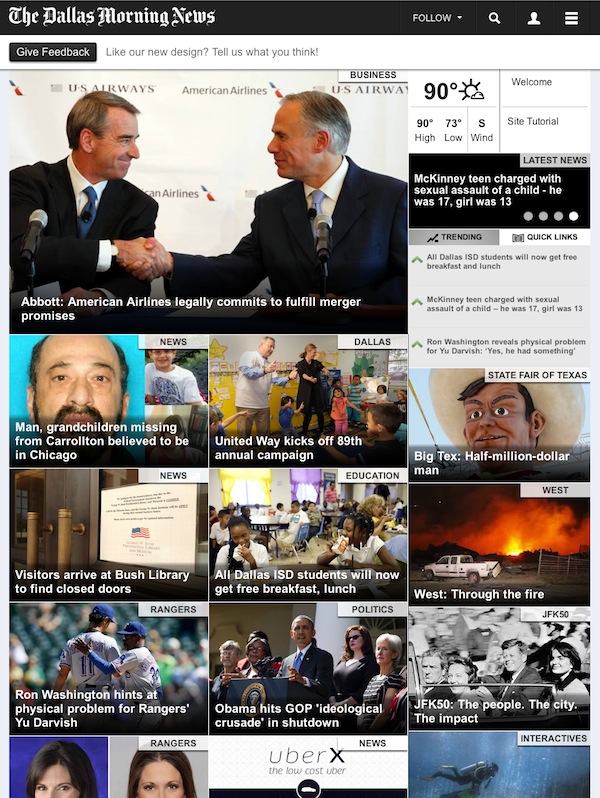
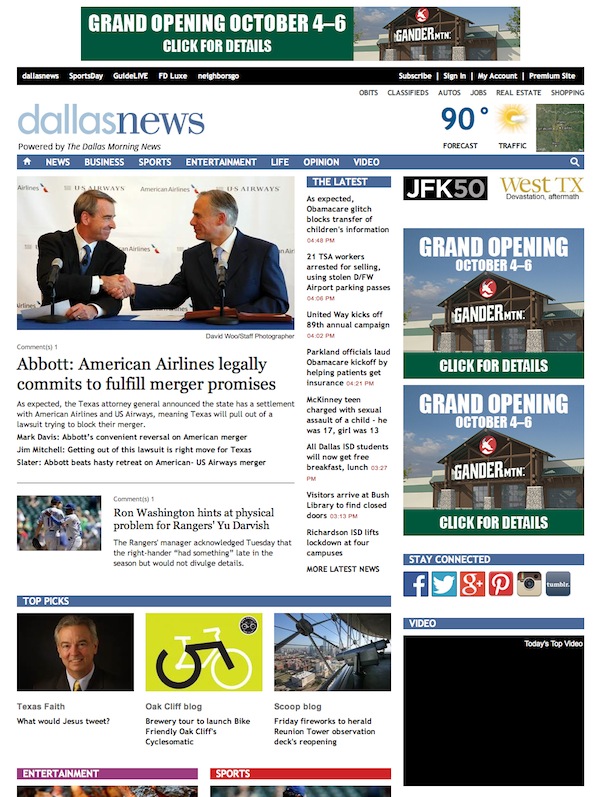
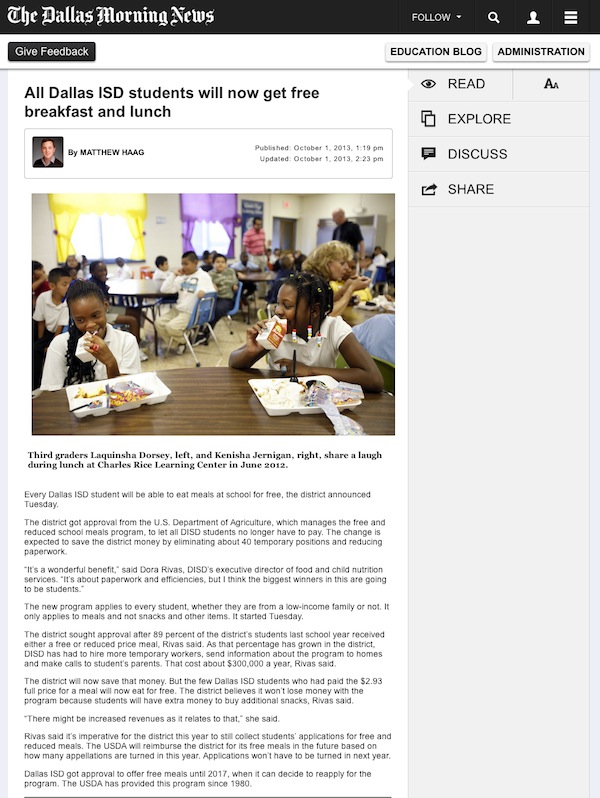
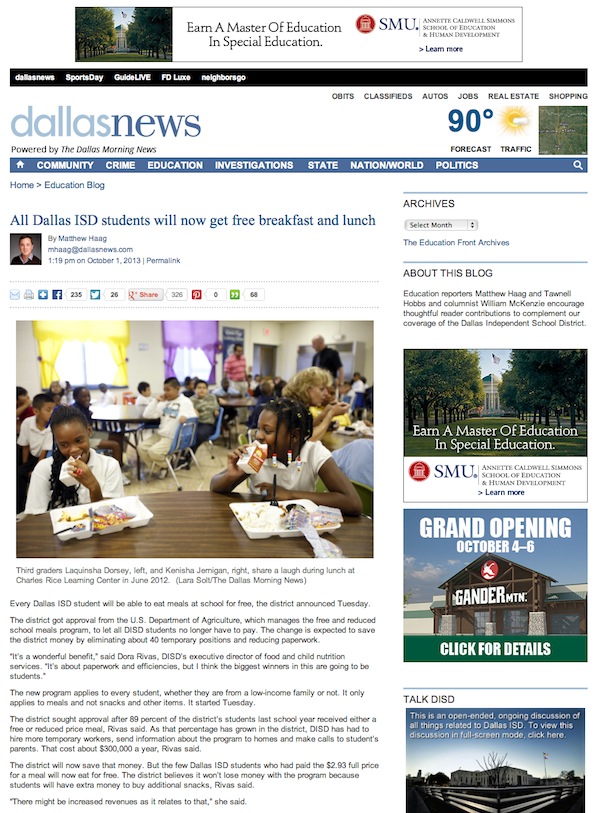
Why the change in strategy? First, the newspaper has come to believe that its remaining print subscribers are highly unlikely to be lured away by digital.
The paper’s chief marketing officer Jason Dyer told Ad Age that its research found “just 5% of the Morning News’ print subscribers would give up their seven-day print editions for complete digital access, even if that digital access was free.” That led to the emphasis on the reading experience — not just the content — being key. Print readers see online as a companion, not a replacement, Moroney told me, and if that’s the case, then the strategy needs to be to make something that appeals directly to a digital-only audience.
The paywall strategy wasn’t showing great, business-shifting success either. The paper wouldn’t say (or tell its own reporter) how many digital-only subscribers it had accumulated under the outgoing model. “We looked up and said, Well, we have a nice digital-only business of sorts, but it’s not the robust business that our print subscription base is,” Moroney said.
“We did not see a continuous growth going on in digital-only subscribers, and where it began to plateau out for us, at least in this juncture, was not what we thought was a robust enough digital-only subscriber base to warrant saying, Okay, great, let’s keep doing this,” he said.
At the moment, the new layout is the main thing that a paying subscriber gets over the general public, but that will grow. Eventually, paying subscribers will also have a subscriber loyalty program that offers benefits like sports tickets and access to events. (Think of the Orange County Register as a model.) Moroney said they’re working with Brierley + Partners, which has helped create rewards programs for Hilton and Bloomingdale’s, on building out the loyalty program. He also said, true to his pro-experimentation form, that they’re not ruling out using a metered-access model down the road; the new strategy, just like the old one, will be tweaked over time. (A sort of soft meter will be used to periodically prompt frequent readers about a possible premium upgrade.)
The Globe-style two-site approach didn’t appeal to the Morning News because of the innate difficulties around launching and maintaining two separate websites. “We were very concerned about creating two different URLs and trying to brand two different URLs and brand them in different ways,” Moroney said. “We were just very concerned that we were just going to confuse the consumer.”
Putting all stories outside of a paywall increases the number of impressions available to sell to advertisers, which may mean an incremental increase in digital ad revenue, Moroney said. But that alone won’t help the paper’s bottom line, which is why Moroney wants the paper to experiment with new types of advertising and new lines of business.
“Will this work? I don’t know,” Moroney said. “But the rest of the industry is trying one thing, and it may work. I hope it does. I hope the metered model works. We said, Let’s just try something else. We’re hardly betting the farm on this.”